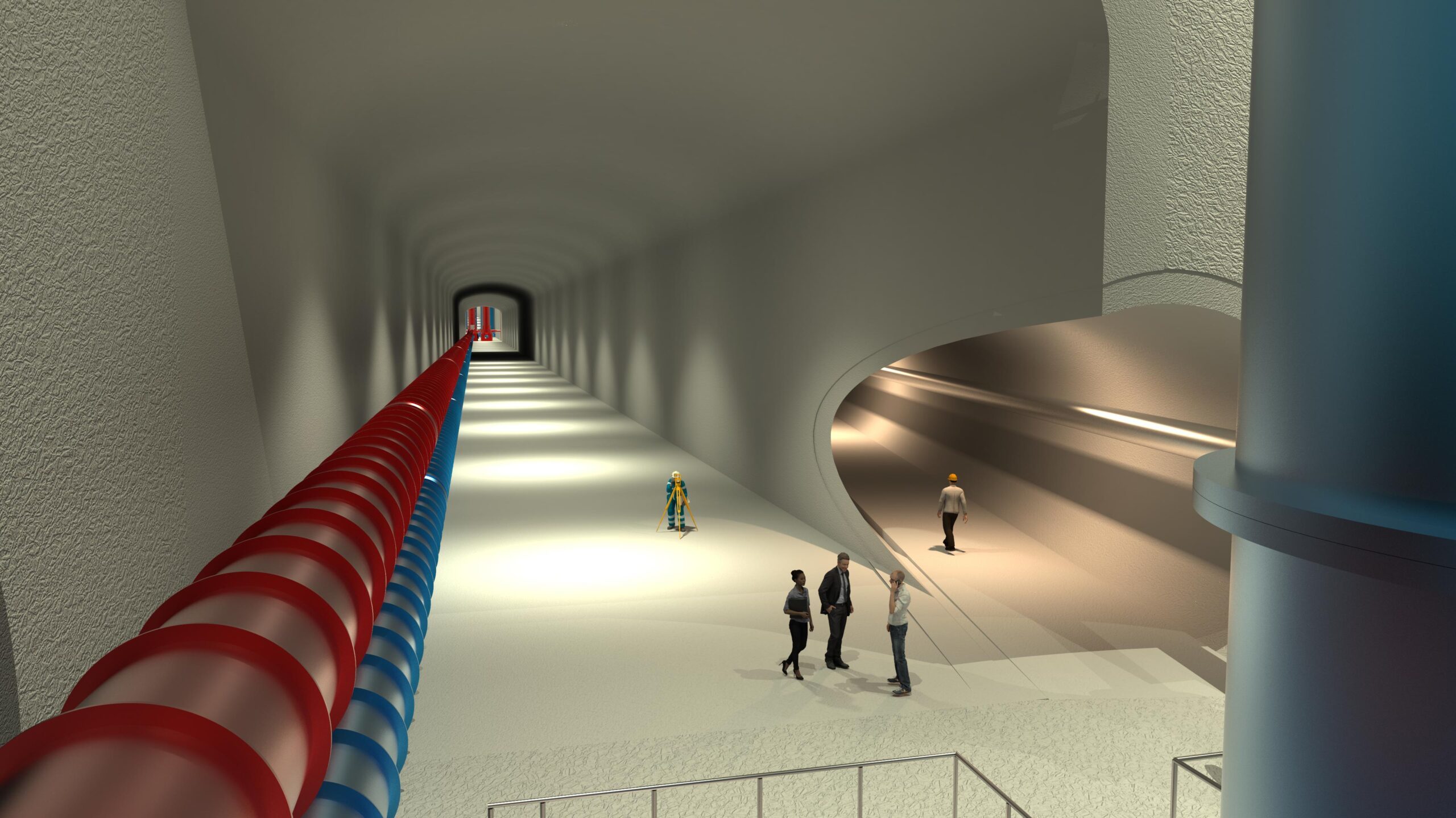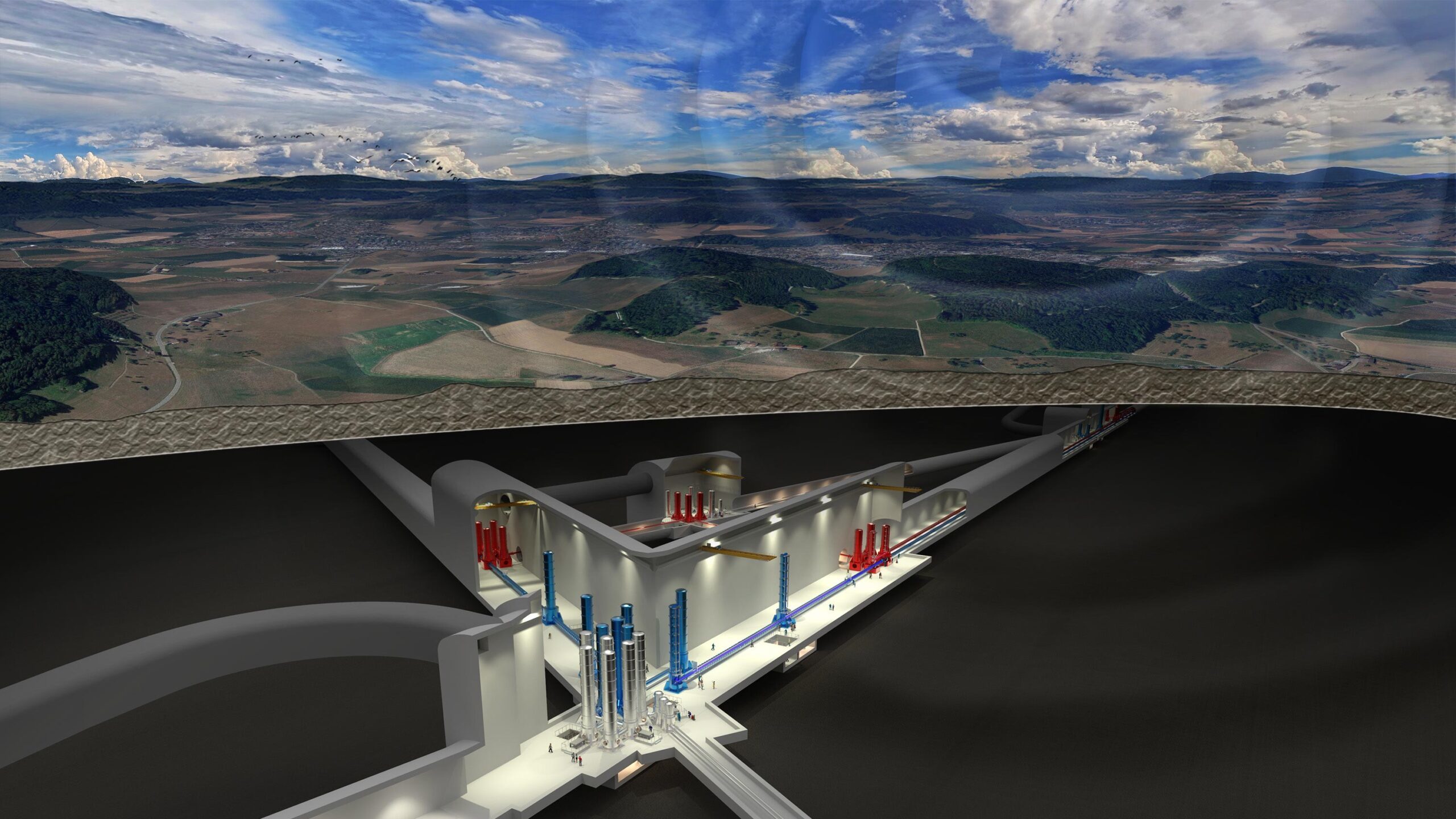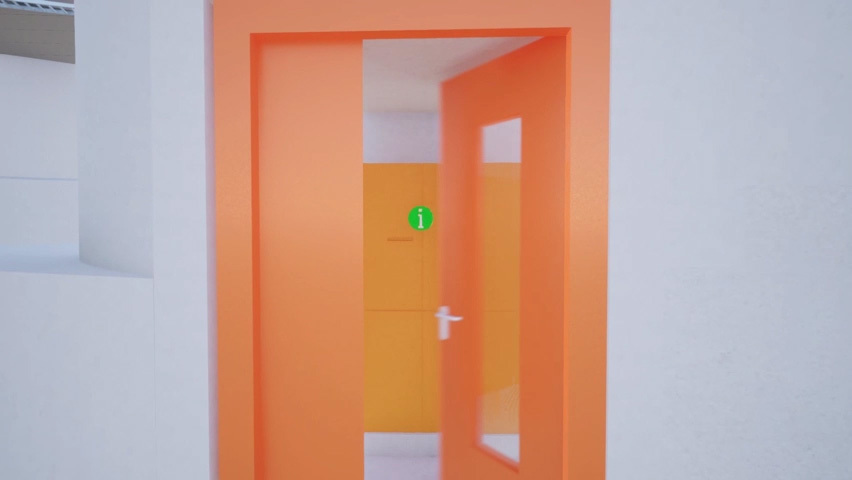Lombardi conducts feasibility study for iconic Einstein Telescope
Cosmic Secrets with Einstein Telescope's Pioneering Vision




«This groundbreaking project promises to unlock cosmic secrets, enhancing our scientific understanding and inspiring future generations of astronomers and physicists.»
The unique underground telescope will provide scientists with new insights into the history of the universe, being able to detect a thousand times more gravity waves than its predecessors.
As part of the preliminary work, the Netherlands, Belgium, and Germany are jointly investigating whether they can house this world-class observatory in South Limburg due to its unique soil conditions that dampen disruptive vibrations. In cooperation with partners Amberg Group, TEC and Tractebel, we will carry out the technical feasibility study on behalf of the Dutch National Institute for Subatomic Physics (Nikhef).
Great scientific significance
The observatory is of great significance for international physics and astronomy. In terms of importance, it is best compared to CERN in Geneva, the largest particle accelerator in the world.
With the Einstein Telescope, researchers will be able to “hear” black holes colliding and gain new insights into the early universe, right back to the Big Bang. They will be able to look at the birth process of black holes and neutron stars.
The Einstein Telescope will consist of a triangle of three vacuum corridors, each ten kilometres long, located 250 to 300 meters below the Earth's surface. There, gravitational waves are measured by constantly monitoring the length of its three detector corridors with sensitive and vibration-free suspended lasers. If that length changes within a specific pattern, it is the signal of a passing gravity wave.
- January 25, 2024
- Conventional and TBM tunnelling
- Cavern and shaft construction
- Tunnel safety
- Risk Analysis
- Special geotechnical works

«After the major transalpine tunnels, it's time for science of the highest order! We accompanied CERN as planners and site managers. The unique "Einstein Telescope" is our next challenge in a series of ground-breaking tasks. We are very much looking forward to it!» Nikos Lavdas, Head of the Underground Department
The ideal location
The border area of the Netherlands, Belgium, and Germany has been selected as a potential location for the Einstein Telescope because the soft topsoil of this area dampens vibrations caused by human activity on the surface, so that the underground observatory can measure undisturbed.
The area forms the heart of a top European region, with many universities nearby. There is also a network of high-tech companies with expertise in the required precision technology. This network of research institutions and technology experts increases the attractiveness of the Euregio Meuse-Rhine as a business location, and the potential economic boost from the Einstein Telescope being located in the area is high.
As part of our feasibility study, we will investigate, among other things, the suitability of the subsurface, the best position of the three vertices of the triangle and all technical challenges related to the deep tunnels, with everything that entails.
Once the feasibility study is complete, the Netherlands, Belgium and Germany Government will decide whether to put it forward as a possible location for the Einstein Telescope. The final decision of where the observatory will be located is then expected to be made at European level in 2025/2026. Construction is estimated to begin in 2028.
Our specialist knowledge
We have been involved in major Underground projects in recent years, among them the CERN in Geneva or the major transalpine tunnels, such as Gotthard, Lyon-Turin, and Brenner. Designing underground structures and supervising tunnelling excavation works is our core business.

«This project will require everything we stand for: High specialized underground expertise, designing in accordance with very strict requirements and outstanding project management skills. With all our enthusiastic and committed colleagues I’m fully convinced that we will master this challenge.» Wolfgang Wieser, Tunnelling expert and Lombardi’s project leader of the Einstein Telescope project
kilometres long – the length of each side of the triangle formed by the three vacuum corridors.
meters below the Earth's surface
-national effort, with the Netherlands, Belgium, and Germany collaboratively exploring hosting possibilities.






